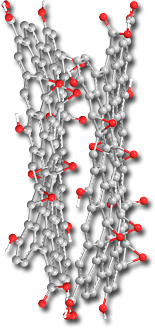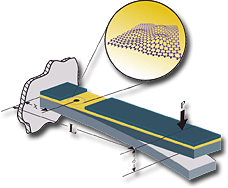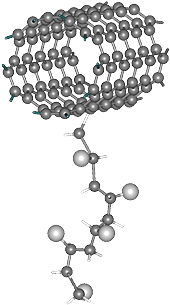Preparation and Characterisation of Graphene films and tapes
- Published in Research
 Free-standing paper-like or foil-like materials based on modifications of elemental carbon draw a great attention over the last years. Their proposed or already implemented uses include protective layers, chemical filters, components of electrical batteries or supercapacitors, adhesive layers, electronic or optoelectronic components, and molecular storage. Similarly to buckypapers prepared from carbon nanotubes by vacuum filtration, a free-standing membrane can be made by a flow-directed assembly of individual graphene or graphene oxide sheets.This new material outperforms many other paper-like materials in stiffness and strength. Its combination of macroscopic flexibility and stiffness is a result of a unique interlocking-tile arrangement of the nanoscale sheets.
Free-standing paper-like or foil-like materials based on modifications of elemental carbon draw a great attention over the last years. Their proposed or already implemented uses include protective layers, chemical filters, components of electrical batteries or supercapacitors, adhesive layers, electronic or optoelectronic components, and molecular storage. Similarly to buckypapers prepared from carbon nanotubes by vacuum filtration, a free-standing membrane can be made by a flow-directed assembly of individual graphene or graphene oxide sheets.This new material outperforms many other paper-like materials in stiffness and strength. Its combination of macroscopic flexibility and stiffness is a result of a unique interlocking-tile arrangement of the nanoscale sheets.

 Graphene is a two-dimensional crystal, consisting of
Graphene is a two-dimensional crystal, consisting of  The classic methods for low volume fraction polymer nanocomposites based on CNTs involve melt blending, solution casting, solution mixing, direct mixing and in-situ polymerization. However, using these techniques has resulted in phase separation between polymer and CNTs, low polymer wetting of CNTs and low interfacial shear strength between polymer matrix and CNTs.
The classic methods for low volume fraction polymer nanocomposites based on CNTs involve melt blending, solution casting, solution mixing, direct mixing and in-situ polymerization. However, using these techniques has resulted in phase separation between polymer and CNTs, low polymer wetting of CNTs and low interfacial shear strength between polymer matrix and CNTs. Carbon nanotubes (CNTs)
Carbon nanotubes (CNTs)